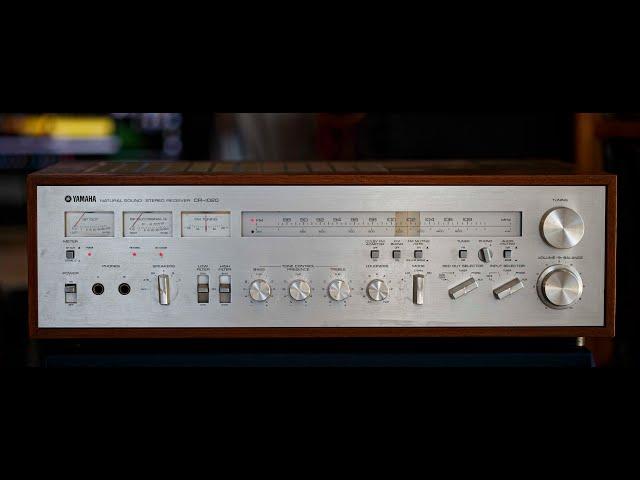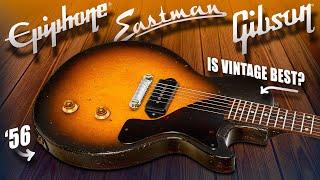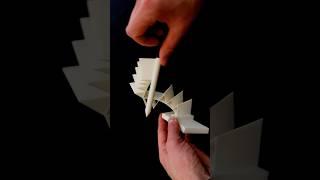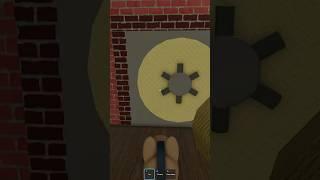
Yamaha CR1020 Receiver- Vintage Audio Review Episode #144
Комментарии:

Nice job and a very nice looking receiver (and nice looking Vette, I assume that's a good sign for the receiver). My AR SP-3 pre-amp has a similar "loudness" control. I actually really like it. I first turn the pre-amp on with the volume control about as high as I would ever want it. Then use what AR calls the "Contour" control as the volume control. I'm assuming the lower volume I go with it the higher the bass and treble bumps are. So why the volume goes down as I turn it clockwise. Not sure, but I'm guessing the Fletcher-Munson curves show more boost is needed at lower volume levels?
Ответить
Thanks for this enjoyable review! I used to see advertisements for these back in the day. I later owned a 1985 1020A model with the Auto Class A feature that I rarely used. I didn't use or like the variable loudness feature either. But I did like the sound of that Yamaha integrated amplifier. I ended up selling that amp a while back and getting a Parasound amplifier, which I like a lot. Thanks again.
Ответить
I don't know where your math comes from as far as inflation figures go, but if that receiver was new today, it would go for at least $6,500...if not $8,000.
Ответить
I owned the CR 2020. The FM tuner had the best sound quality I ever listened to from any brand. The design features of the late 70's are still mostly unaltered in todays Yamaha HiFi equipment.
Ответить
Somewhere back in time a small group huddled around a desk in Yamaha's back office and cooked up a devious plan for the loundess control.
"Oh man, this is really going to mess with Scott when he finally reviews it" 🤨

Had one for a while. Nice performer, but spent too much time on the weak point... the input selector! Instead of a round wafer with contacts, they had a long shaft drive a cam that drove a linear slide switch! Very difficult to clean, compared to a round wafer. Kept failing.
Ответить
I would agree that Yamaha should have called it an "anti-loudness" control. But if you read any Yamaha owner's manual, they explain how it works and how you are supposed to use it pretty clearly.
This is the gist of it:
First, you set the loudness knob to Flat, then you turn up the Volume to the highest setting that you would normally listen at. Then, if you want a lower sound level (late at night, for example), you adjust the Loudness knob away from Flat, which mainly reduces the mid-range frequencies to lower the overall sound level to what you need while still sounding natural or "good" at that lower sound level. You leave the Volume knob alone when you do this. The intent was to follow the Fletcher-Munson sound curve.
Unfortunately, most people have never read the owner's manual, so they don't know how it is supposed to work.
The CR-1020 was closer to the top of the 1977 Yamaha receiver line. These were the 1977 models:
CR-2020
CR-1020
CR-820
CR-620
CR-420
In 1978, Yamaha added the CR-3020 at the top and the CR-220 at the bottom.

Another fantastic in depth video that I really enjoyed.
Ответить
The U joint extensions were for the selector switches, not turning the tuning capacitor. That was done via a standard flywheel/dial cord system. The xx20 receivers were really a disappointment to me when it came to build quality. The large boards were more prone to issues and those on the board switches caused problems as well. And for a high end receiver to not even have a tuned RF stage for AM was pretty cheesy. The variable loudness function was explained in the owner's manual, and was designed to provide compensation better suited to the customer's actual usage and the sensitivity of the connected speaker. Yamaha was not the first to use it, as variable loudness was found on the McIntosh C20 preamp from the late 1950s. I was service manager for one of the first Yamaha audio dealers in the country, and was impressed by the build quality of the first generation of products they introduced. But compare this CR 10120 to the original CR1000, and you see how far their quality slipped in a short period of time. And if you look at the next series (CR1040, etc) just one year later, then you get into those really horrible output amp IC's
Ответить
Thanks, enjoyed the video.
I have a CR 2020 thats in need of an output pair of transistors. Any suggestions on where to find good replacements these days?






![RESCUING THE PRESIDENT (PS5) Realistic ULTRA Graphics Gameplay [4K 60 FPS] Call of Duty RESCUING THE PRESIDENT (PS5) Realistic ULTRA Graphics Gameplay [4K 60 FPS] Call of Duty](https://ruvideo.cc/img/upload/bzB2UlRUdFNxeGQ.jpg)



















